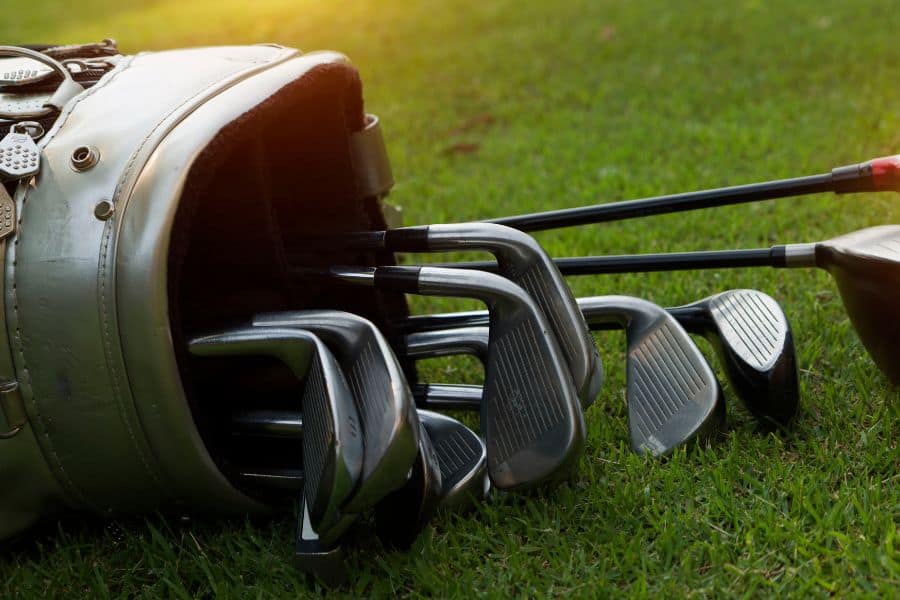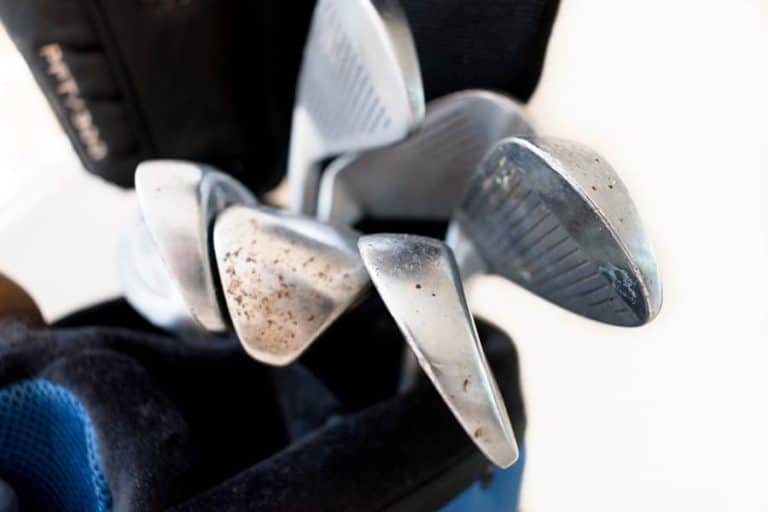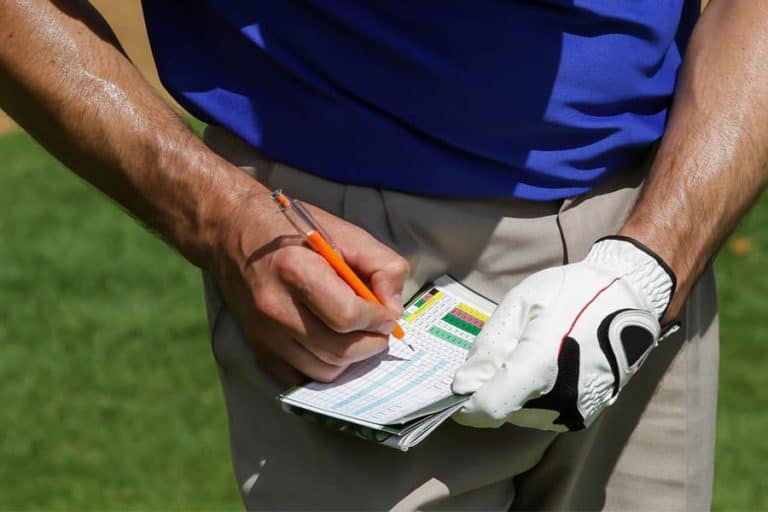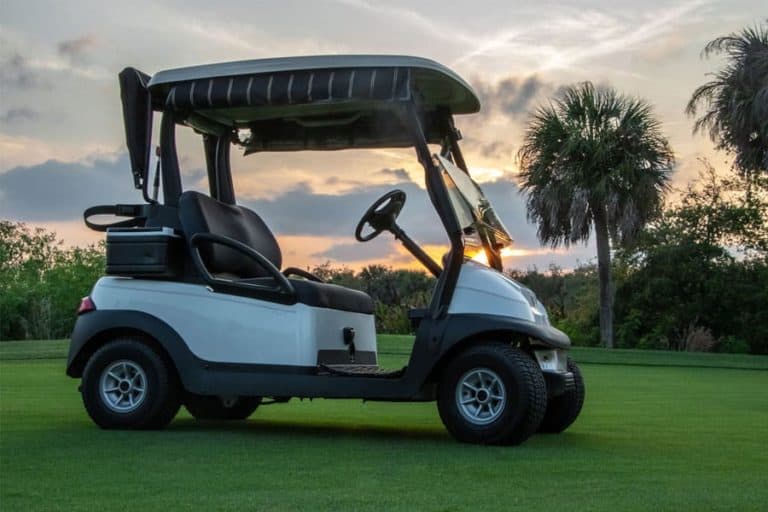What Wedges Do I Need In My Golf Bag – Choose The Right Ones

Learn about the differences and what type of wedge to choose to get the best long-distance shots, high-lob shots, and more to improve your game.
Wedges play a crucial role in every golfer’s game. It offers versatility, with different types that provide diverse outcomes on the course. These club modifications enable golfers to navigate various scenarios, making informed choices that significantly impact their overall performance.
I. What wedges do I need?
A wedge has to be chosen carefully according to the player’s preferences. Wedges offer various loft angles from 45-64°. These lofts are usually displayed on the head of the club.
| Type of wedge | Loft angle |
| Pitching wedge | 45-50° |
| Gap wedge | 50-55° |
| Sand wedge | 54-58° |
| Lob wedge | 58-64° |
Read More: Types of golf clubs
II. Types of golf wedges
Let us in detail understand various types of wedges, their features, and their outcomes.
1. Pitching Wedge
The pitching wedge is used by both new and experienced golfers. It is a key part of golf club sets, with a loft between 45-50°. The pitching wedge stands out for hitting longer shots than other wedges.
Golfers mainly use it for full shots onto greens and occasionally for longer chip shots. Due to its lower loft and ability to cover more distance, it’s often considered a part of golf irons rather than wedges.
2. Gap Wedge
It is also known as an attack wedge (AW) or a utility wedge (UW). Gap wedges play a versatile role, bridging the gap between pitching and sand wedges. With a loft typically ranging from 50-55°, it aids in various situations on the course.
The gap wedge is ideal for mid-range approach shots and provides a balance of distance and precision. It also offers consistent swings when compared to other wedges.
3. Sand Wedge
The sand wedge, as its name implies, was initially created to help golfers get out of bunkers near the green. The loft ranges between 54-58°. These are crafted with advanced edges and bounce to smoothly navigate heavy sand and turf. They’re tailored for precise bunker shots and maintaining clubhead speed for optimal distance.
4. Lob Wedge
With a loft ranging from 58-64°, Lob wedge is the newest wedge design. It is designed in such a way that it helps lift the ball quickly and stop it swiftly, and it is perfect for high and soft shots.
The lob wedge is useful for flop shots due to its high loft, but it needs more clubhead speed for the elevated trajectory, making it difficult to master. While not found in every player’s bag, the lob wedge’s higher loft allows for amazing shot heights that glide over obstacles and fall gently near any pin.
III. Points to consider when selecting a wedge to play the game
Choosing the right wedge is crucial for game success, consider these factors before selecting the wedge:
1. Check for gaps
Wedges come in various lofts, bridging the gap between your iron set’s pitching wedge and sand wedge. A simple rule is to keep around 4 degrees of loft between your wedges. For instance, if your 48-degree pitching wedge covers 110 yards, and the 56-degree sand wedge goes 80 yards, consider adding a 52-degree wedge that carries about 95 yards to complete your set effectively.
2. Pick the suitable design
Selecting the right design as per the player’s preference is very important. Consider the following factors for picking the right design:
- Grind
It is crucial to choose the right grind. Different sole grinds on the club enhance your skills for various tricky shots around the greens. For instance, heel grinds can reduce bounce changes when you open the clubface for a lob shot.
On the other hand, toe relief in the grinds is handy for lifting the toe during chip shots, preventing the heel from dragging in the turf.
- Bounce
The essence of wedge design lies in the bounce degree, which is the angle between the leading edge and the lowest point of the sole. Low bounce suits tight lies on firm turf, while high bounce is better for varied conditions.
Bounce helps the club move through turf or sand, preventing excessive digging. Factors like swing path, attack angle, divot depth, and conditions determine ideal bounce.
3. Knowing Your Distances
Selecting the right wedge depends on knowing your distances, which is a crucial factor in golf. Understanding your distances ensures you choose the appropriate wedge for different scenarios, whether it’s a precise approach to the green, a bunker escape, or a delicate short shot. This knowledge enhances shot accuracy, optimizes performance, and empowers golfers to make strategic club selections based on the unique challenges of each hole.
- Pitching wedge: 48 – 95-110 yards
- Gap wedge: 52 – 80-95 yards
- Sand wedge: 56– 65-80 yards
- Lob wedge: 60 – 50-65 yards
In golf, everyone has different skills and strengths. It’s crucial to know your own game and choose your wedges accordingly. Greens vary in size, and having the right club with the correct loft is key to getting your ball close to the pin.
This can make a huge difference, turning a potential birdie opportunity into just being on the green. So, understanding your abilities and tailoring your wedge setup accordingly is essential for successful shots on the course.
IV. Two-wedge system
A two-wedge system in golf means having two different wedges in your bag. Traditionally, most golfers use three wedges: pitching, sand, and lob, 5 some choose to stick with just the first two – pitching and sand wedge.
Many find the lob wedge challenging, especially for beginners, as it has a lot of loft and takes time to master. So, some golfers prefer a simpler setup and rely on pitching and sand wedges for various shots on the course. This setup allows golfers to cover a range of distances and scenarios more effectively, adding versatility to their game.
V. Three-wedge system
A three-wedge system in golf means having three different wedges in your bag. To hit the right distances in golf, consider the degrees of loft in your wedges. Check the gaps between your pitching wedge and sand wedge.
Pros suggest around four degrees of loft difference between wedges. For example, if your 48-degree pitching wedge goes 110 yards and your 56-degree sand wedge only reaches 80 yards, get a 52-degree wedge to cover the gap at around 95 yards. Matching your wedges to your needs helps you hit different distances accurately.
VI. Four-wedge system
A four-wedge system in golf means having four different wedges in your bag. These wedges, like the pitching wedge, sand wedge, gap wedge, and lob wedge, each have specific lofts to help you hit the ball at different distances and handle various situations on the golf course.
Having four wedges gives you more options and flexibility in choosing the right club for different shots, making it easier to play and enjoy the game.
Conclusion
To ace in golf, selecting the perfect wedge is essential based on personal preferences. A well-chosen wedge enhances your ability to handle different course scenarios, ensuring precision in approach shots and effective escapes from hazards. Experiment with various wedges during practice to discover the one that feels most comfortable for your swing.
FAQ’s
1. How many wedges should low handicappers carry?
Three wedges are necessary for mid-handicapped golfers: a pitching wedge, a gap wedge, and a sand wedge.
2. How many wedges should mid-hand handicappers carry?
Golfers with low handicaps should carry four wedges: a lob wedge, a sand wedge, a gap wedge, and a pitching wedge.
3. How many wedges do pros carry?
Professional golfers usually carry four wedges: a lob wedge, a sand wedge, a gap wedge, and a pitching wedge. In other cases, they may remove a fairway wood from their bag in order to add a fifth wedge that has a different sole grind or bounce.








